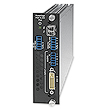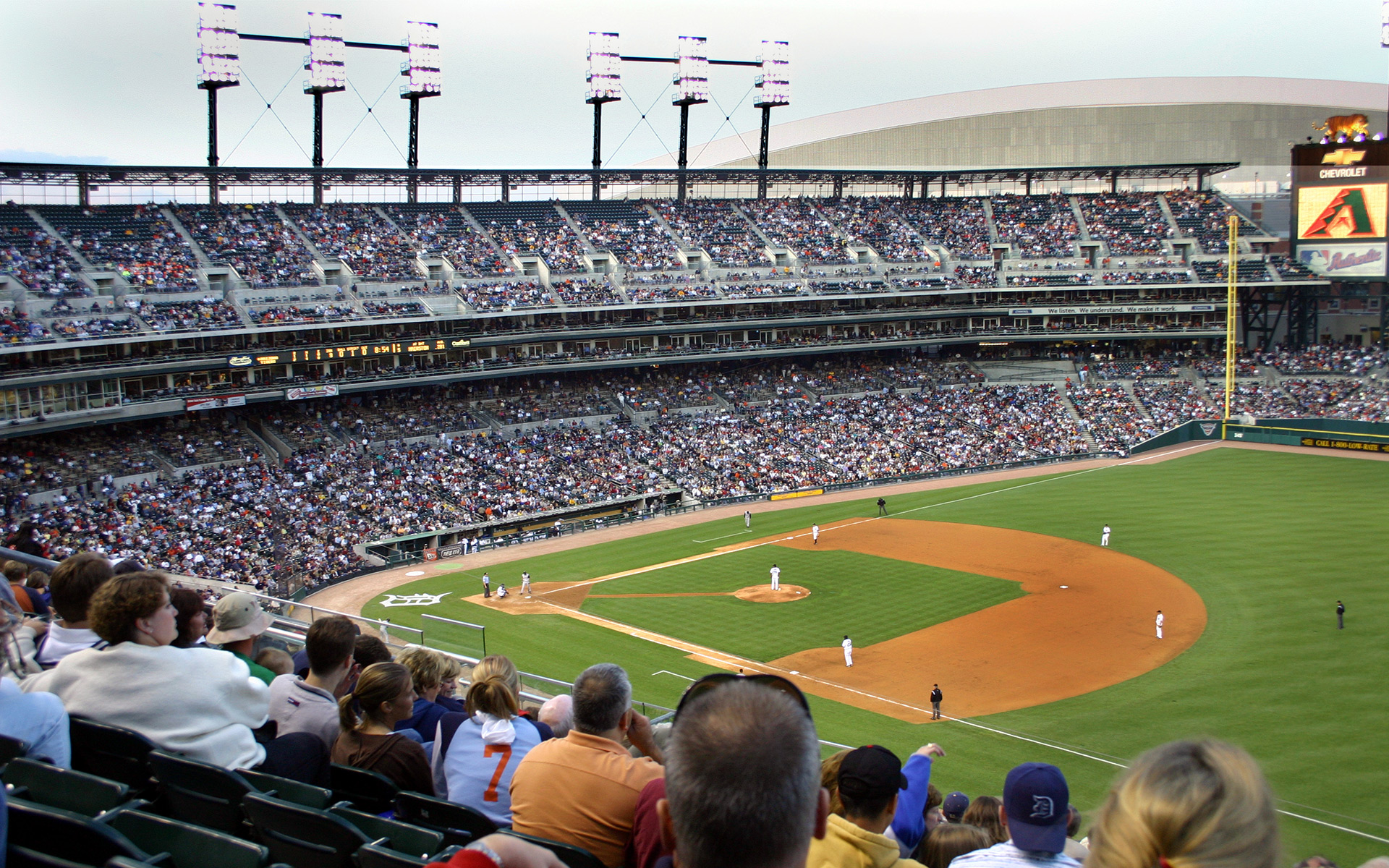Sports Stadium
Sports venues of today have become much more than places people go to simply watch a game. They have been built, or modernized, to include high levels of technology for enhancing the overall experience for both the guests in attendance and those viewing from the comfort of their homes. Fiber optic-based systems represent ideal solutions for addressing the many challenges associated with stadium environments. This baseball stadium provides an example of how implementation of a fiber optic infrastructure contributes to the success in implementing AV for these venues.
Solution Needs Assessment
Staffing
On game days, a large staff is required to operate the various systems within the stadium. Professional camera operators positioned in strategic locations provide continuous game and crowd coverage. This information is distributed to many other supporting systems for additional use. Production staff is on hand to provide content editing and production services for broadcast crews and material presentation to numerous ancillary venues within the stadium.
Location Requirements
The centralized equipment room serves as the heart of the system for overall signal distribution to the many facilities within the stadium. Main areas supported from this location include the master control room, in-house editing suites, broadcast truck lot, press box, administrative boardroom/ conference rooms, and entertainment venues such as various stadium clubs.
Sources and Connectivity
Multiple broadcast cameras are positioned within the stadium to provide optimal coverage in full HDTV 1080p resolution from several angles. The master control room receives live camera feeds via the equipment room, and uses a large production switcher to select between feeds and various inputs from slow motion systems, media servers, and graphics generators. Signals are then fed back to the equipment room for further distribution within the facility.
Special Requirements
The very long distances between areas and use of high resolution content dictate the need for fiber optic signal distribution throughout the facility. Signal routing equipment must accommodate a variety of standard and high definition video formats, and high resolution computer graphics.
System Design Solution
Display System
A wide variety of display systems are located within this stadium. Displays range from HD-SDI monitors and LCD flat panels, to LED scoreboard and displays, and large-screen projectors. All displays must accommodate up to 1080p and 1920x1200 signal resolutions.
Video Formats and Connectivity
HD-SDI is the predominant signal format distributed throughout the stadium. However, many other signals, including DVI, composite, and component video, are also provided by the various systems. Main locations have direct connection to the routing system, which also accommodates a large number of auxiliary patch locations for alternate camera placement and other usage. An IPTV system is used to support the hundreds of flat-panel displays mounted throughout the concourses, concession stands, and seating areas.
Switching and Signal Management
An Extron FOX Matrix 14400 144x144 Fiber Optic Matrix Switcher is used as the main routing switcher within the system. The fiber I/O boards are capable of routing any signal format via Extron FOX Series and FOXBOX Series Fiber Optic Transmitters and Receivers. The matrix is also populated with HD-SDI boards to allow for direct connection of input and output HD-SDI signals to other devices in close proximity, such as a large HD-SDI router and one of the in-house editing suites.
An Extron DMS 3600 36x36 DVI Matrix Switcher routes high resolution computer graphics from signal processing equipment and PCs in administrative areas for use within the main system, boardroom, and conference rooms.
Signal Distribution and Extension
A fiber optic infrastructure is used to transport video signals to and from the equipment room, addressing the need to send video signals over very long distances and through narrow conduit.
Extron FOX 3G HD-SDI Fiber Optic Transceivers transmit the HD-SDI output signals from the cameras to the equipment room, and receive the video signals from the control room via the FOX Matrix 14400.
Extron PowerCage FOX DVI Plus Fiber Optic Transmitters and Receivers are used within the equipment room. The PowerCage FOX DVI Plus Fiber Optic Extender boards provide a compact, space-saving solution for efficiently mounting fiber optic signal extenders within an equipment rack.
Video Signal Processing
The Extron DVC 501 SD converts the HD-SDI and 3G-SDI live broadcast signals from the professional mixer and switcher to a DVI-D video signal, for compatibility with the DMS 3600 matrix switcher residing in the equipment room.
System Diagram

Learn More

FOX Matrix 14400
Modular Fiber Optic Matrix Switcher from 16x16 to 144x144

DMS 3600
Modular DVI Matrix Switcher with EDID Minder®

FOX 3G HD-SDI
Fiber Optic Extender for DVI, Audio, and RS-232

PowerCage FOX DVI Plus
Fiber Optic Extender for DVI-D, Audio, and RS-232

DVC 501 SD
Multi-Rate SDI to DVI and RGB/Component Converter


 Chrome
Chrome
 Firefox
Firefox
 Edge
Edge
 Safari
Safari